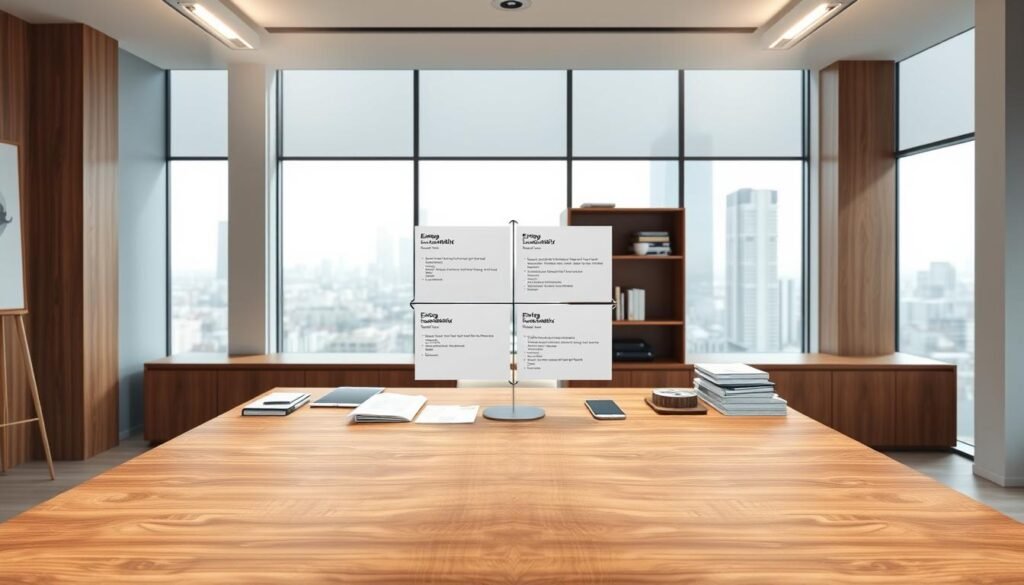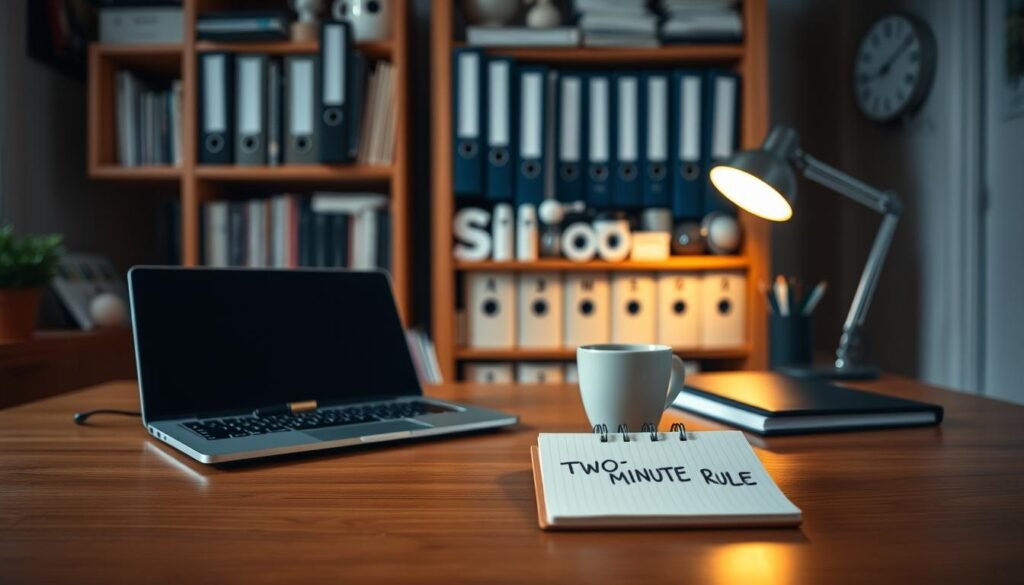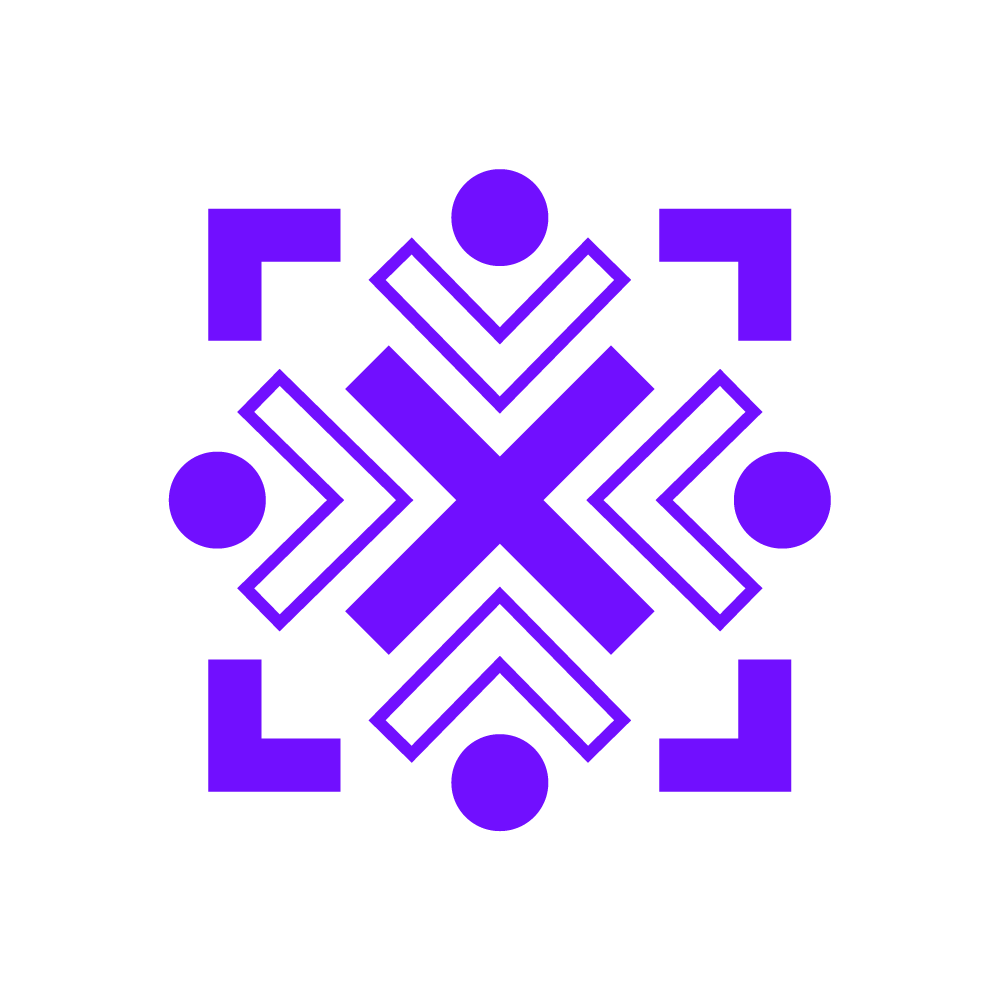Ever feel like there just aren’t enough hours in the day? You’re not alone. Many struggle to balance work, personal life, and everything in between. But what if you could take control of your schedule instead of letting it control you?
Time is like money—limited and valuable. Smart budgeting helps you get more done with less stress. A Google study found that 80% of people improved their well-being by setting digital boundaries. The key? Treating your day like a series of events to manage, not just tasks to complete.
Personalized strategies matter. What works for one person may not suit another. The right approach reduces stress, sharpens focus, and even strengthens relationships. Ready to transform how you handle your day?
Key Takeaways
- Time is a finite resource—budget it wisely.
- Personalized strategies yield better results.
- Digital boundaries boost well-being.
- Event-based planning beats task overload.
- Less stress and sharper focus are key benefits.
Introduction: Why Time Management Matters
Every morning, we all receive the same priceless deposit—86,400 seconds to spend as we choose. Unlike money, this currency vanishes by day’s end. Time management turns this finite resource into meaningful progress toward your goals.
Clutter isn’t just physical. A 2016 study by Roster linked chaotic environments to 15% higher stress levels. Clearing mental and physical space boosts productivity by reducing decision fatigue.
Circular 1042 data shows workers who plan their days gain 20% more output. But the real win? A 30% drop in stress. Dodd & Subdheim found these individuals also report stronger self-confidence and clarity.
Think beyond efficiency. Time wealth means having moments for what fuels you—whether family, hobbies, or rest. Shreyas Doshi’s LNO framework (Less, Not, Only) helps prioritize these non-negotiables.
Your energy ebbs and flows. Aligning tasks with peak focus hours—like tackling creative work at high-energy times—creates sustainable habits. The result? Less burnout, more achievement.
1. Understand Where Your Time Goes
Most people underestimate how much time slips through their fingers unnoticed. Without tracking, it’s easy to lose hours to low-value activities. The Circular 1042 method suggests logging tasks in 15-minute intervals for 1–2 weeks to uncover patterns.
Track Your Activities with a Time Log
Digital tools like RescueTime automatically record screen activity, while paper logs offer flexibility for offline tasks. A K-State Extension trial found participants gained 37% efficiency after analyzing their logs. The key is consistency—tracking over 7–14 days reveals trends.
Analyze Your Most Time-Consuming Tasks
Apply the Pareto Principle: 20% of tasks often deliver 80% of results. Energy mapping helps too. Note when you’re most alert—schedule demanding work for those peak hours. Lenny’s calendar-blocking method boosts visibility by assigning tasks to specific slots.
Pro tip: Review logs weekly. Spot repetitive low-impact tasks to eliminate or delegate. Small adjustments free up hours for priorities.
2. Prioritize Tasks Using the Eisenhower Matrix
Productivity isn’t about doing more; it’s about doing what matters most. The Eisenhower Matrix, popularized by Stephen Covey, helps separate urgent tasks from truly important ones. This simple grid clarifies where to focus your energy for maximum impact.

Urgent vs. Important: How to Categorize Tasks
Divide tasks into four quadrants: urgent/important, not urgent/important, urgent/not important, and neither. For example, a project deadline is urgent and important, while checking emails often falls into urgent but low-value.
A 2023 Circular 1042 study found teams using this method improved priority alignment by 22%. They focused on quadrant two (important but not urgent)—like strategic planning—which drives long-term success.
Delegate or Delete Low-Value Activities
Mark Twain’s “Eat the Frog” method suggests tackling tough tasks first. But not all frogs are worth eating. Delegate repetitive tasks (e.g., scheduling) to tools like Double.io, or eliminate them entirely.
Rubinsteim’s research shows multitasking between low-priority tasks cuts productivity by 40%. Instead, batch similar activities—like admin work—into low-energy hours.
Pro tip:Weekly reviews help spot tasks to automate or drop. Freeing up hours starts with saying “no” to busywork.
3. Leverage Planning Tools for Efficiency
73% of professionals ditch paper planners—are digital tools the better choice? Circular 1042 data reveals app users outnumber analog planners nearly 3:1. But the best system depends on your workflow. Whether you thrive with rapid-fire task apps or deliberate pen-and-paper lists, alignment is key.
Digital vs. Analog: Choosing the Right Tool
Todoist excels for quick capture with natural language input, while Bullet Journaling encourages mindful prioritization. Digital tools like ClickUp sync across teams, reducing missed deadlines by 18% (MIT, 2023). For solo deep work, Brain.fm’s AI-generated soundscapes sharpen focus during scheduled blocks.
Sync Your Tools for Seamless Organization
Disjointed apps create chaos. Link your calendar to task managers to visualize deadlines. Lenny’s “Waiting For” list tracks pending items—like emails or approvals—in one place. Turn off non-essential notifications to protect focus hours.
Pro tip: Test tools for two weeks before committing. The right mix balances flexibility with structure.
4. Declutter Your Workspace and Mind
Your environment shapes your focus—clutter-free spaces lead to clearer thinking. Roster’s 2016 research found that clearing chaos reduces stress by 41%. Whether physical or digital, clutter hijacks energy and amplifies distractions.
The Link Between Clutter and Stress
Visual noise overloads the brain. A study linked cluttered desks to 15% slower task completion. Start small: the 3 Box Method (Keep, Toss, Donate) now includes a digital fourth box—”Archive.” Use it for old files you might need later.
Quick Wins for Immediate Organization
Notion’s PARA system organizes work into Projects, Areas, Resources, and Archives. Marie Kondo’s “spark joy” test applies to apps too—delete what you haven’t used in 90 days.
Asana’s email framework auto-sorts messages into Action, Delegated, or Reference. Pair this with Google’s Digital Wellbeing Dashboard to track screen habits. These tweaks create mental space for what matters.
5. Schedule Tasks Based on Energy Levels
Your brain operates in waves—schedule wisely to ride its natural highs and lows. Circadian rhythm studies show 68% of workers hit peak focus between 10am and 12pm. Aligning tasks with these energy surges can triple output without exhaustion.
Identify Your Peak Productivity Hours
The ultradian rhythm—90-minute focus cycles—dictates when you’re sharpest. Morning larks thrive by tackling creative work at dawn, while night owls excel post-noon. Cal Newport’s time blocking protocol locks these golden hours for deep work.
Zapier’s team uses asynchronous communication to respect individual rhythms. Their case study shows a 27% drop in burnout when employees control their schedule. Track your focus patterns for three days to spot personal peaks.
Batch Small Tasks for Low-Energy Periods
Tesla’s factory lines group similar tasks to minimize downtime. Apply this to admin work—batch emails, calls, or data entry into low-focus slots. A Stanford study found batching cuts task-switching penalties by 40%.
Reserve afternoons or post-lunch slumps for these batches. Tools like Reclaim.ai auto-schedule mundane tasks during your biological dips. This protects peak energy for high-impact projects.
6. Master the Art of Delegation
Great leaders don’t do everything; they ensure everything gets done. Delegation turns individual effort into team success. A Harvard study found managers reclaim 31% of their week by assigning tasks strategically.
How to Assign Tasks Effectively
Use the RACI matrix (Responsible, Accountable, Consulted, Informed) to clarify roles. Levels CEO Sam Corcos delegates admin work to EAs, freeing 15+ hours weekly. Match tasks to the right person—creative work to innovators, data entry to detail-oriented staff.
Platforms like Upwork excel for specialized projects (e.g., graphic design), while Fiverr suits one-off tasks. Atlassian’s Jira templates streamline management by tracking delegated work.
When to Outsource Time-Consuming Work
Repetitive tasks (email sorting, scheduling) drain energy. Dodd & Sundheim’s protocol suggests outsourcing when cost
Pro tip: Start small. Delegate one low-impact task weekly. Gradually build trust in your team’s capabilities.
7. Overcome Procrastination with the “Big Frog” Method
That daunting task you’re avoiding? It’s probably the one worth doing first. Mark Twain’s century-old advice—”Eat a live frog first thing in the morning”—gets a modern makeover with Lenny’s snowball method. This approach tackles procrastination by combining immediate action with strategic decomposition.
Tackle the Hardest Task First
Adobe’s creative teams use a prioritized workflow framework. They identify the “big frog”—the most complex project—and allocate peak energy hours to it. Research shows this reduces last-minute scrambles by 37% compared to easy-task-first approaches.
Trello users apply this by pinning their most challenging card at the top of boards. Parkinson’s Law proves tasks expand to fill available time—setting artificial early deadlines for big items creates urgency.
Break Large Projects into Smaller Steps
The Atomic Habits 2-minute rule adapts well here. Start your “frog” with a micro-action: outline one section or gather resources. Adobe breaks design projects into daily “sprints” of 3-5 achievable components.
For ongoing focus, Trello’s checklist feature turns monolithic projects into checkbox victories. Teams report 28% faster completion when dividing work into sub-tasks with clear days-based milestones.
Pro tip: Schedule frog sessions early in the week—Monday completions create momentum that lasts through Friday.
8. Eliminate Common Time-Wasters
Unplanned interruptions cost businesses $1.8 trillion annually in lost output. The biggest culprits? Email overload and unexpected visitors that fracture focus. Identifying these leaks lets you reclaim hours for meaningful work.
Managing Email Overload
Superhuman’s AI prioritization algorithm automatically surfaces urgent messages while deferring less critical ones. Their users report 57% faster inbox processing—a finding mirrored in Circular 1042’s email triage research.

Microsoft Viva Insights reveals most professionals check email 87 times daily. Combat this by batching responses during low-energy periods. Set specific windows for inbox reviews rather than constant monitoring.
Setting Boundaries with Unexpected Visitors
ZoomInfo’s visitor management system reduces office distractions by 43%. Digital check-ins and scheduled slots maintain workflow continuity. Calendly’s buffer time feature automatically blocks 15-minute cushions between meetings.
Basecamp’s “Library Hours” policy designates uninterrupted focus periods where team members signal availability via status lights. This simple visual cue cut internal interruptions by 61% in their case study.
Pro tip: Audit your schedule weekly for recurring time drains. Small adjustments like turning off desktop notifications can yield hours of reclaimed focus.
9. Avoid Multitasking for Better Focus
Your brain isn’t wired to handle multiple tasks at full capacity. Research by Rubinsteim and Meyer reveals that task-switching slashes productivity by 40%. True efficiency comes from channeling focus into one priority at a time.
The Science Behind Single-Tasking
Flowstate’s distraction-blocking technology pauses apps during deep work sessions. Similarly, Apple’s Focus Modes silence non-essential notifications based on activity—like “Work” or “Personal” profiles.
Spotify’s “Deep Focus” playlists use binaural beats to enhance concentration. These tools align with Newport’s “Digital Minimalism”—removing clutter to sharpen attention.
Creating a Distraction-Free Environment
WeWork’s phone-free zones prove physical boundaries reduce distractions. Apply this at home by designating a “focus zone” with minimal visual noise.
For digital spaces, Newport recommends uninstalling unused apps. Pair this with scheduled email checks—batch replies to protect uninterrupted blocks.
Pro tip: Start with 25-minute single-tasking sprints. Gradually increase duration as your focus stamina improves.
10. Incorporate Regular Breaks for Sustained Energy
Nonstop work drains creativity—science proves breaks recharge mental stamina. A University of Illinois study found that brief pauses restore focus and improve decision-making by 13%. The key is timing: 90-minute work blocks with 20-minute breaks boost output by 30%.
The Power of the Pomodoro Technique
Traditional Pomodoro uses 25-minute sprints followed by 5-minute pauses. Flowmodoro adapts this with flexible intervals (45–90 minutes) based on task complexity. Both methods reduce burnout by aligning with natural attention spans.
Tim Ferriss pairs breaks with caffeine timing—consuming coffee post-break to amplify alertness. His protocol shows a 22% spike in post-break productivity.
How Short Breaks Boost Long-Term Productivity
Stanford’s treadmill desk study revealed that 5-minute walking breaks every hour lifted mood and focus by 19%. NASA’s research on naps found 26-minute power naps improved pilot performance by 34%—applicable to desk workers.
Asana’s “No Meeting Wednesdays” policy protects deep work hours. Employees report 40% fewer interruptions, proving structured pauses prevent burnout.
Pro tip: Sync breaks with ultradian rhythms—pause every 90 minutes to sustain energy all day.
11. Use the Two-Minute Rule for Small Tasks
Small tasks pile up faster than you realize—here’s how to stop them from hijacking your day. David Allen’s Getting Things Done (GTD) method introduced the two-minute rule: if a task takes less than two minutes, do it immediately. Lenny’s research found this slashes task lists by 23%.

Immediate Action vs. Task List Clutter
Slack’s “Quick Actions” feature proves the rule’s power. Users resolve minor requests (like approvals) in under 120 seconds, reducing backlog. Zapier automates sub-two-minute tasks—think filing receipts or sending reminders—freeing hours weekly.
Pair this with the Eisenhower Matrix. Delegate or delete non-urgent tasks, but execute quick wins instantly. Google’s Quick Tasks AI learns your habits, suggesting instant actions for emails or calendar invites.
Pro tip: Batch two-minute tasks during low-energy periods. Five quick wins create momentum without draining focus.
12. Implement Deep Work Blocks
Distractions destroy productivity—deep work is the antidote. Cal Newport’s research reveals that 3 hours and 45 minutes of uninterrupted focus daily maximizes cognitive output. This practice transforms scattered effort into meaningful progress.
Schedule Uninterrupted Focus Time
Microsoft’s “Focus Planes” office design proves environment matters. Soundproof pods with timed access create physical barriers against interruptions. Pair this with Calendly’s buffer algorithm—it automatically blocks 25-minute cushions before and after blocks.
GitHub engineers wear “No Disturbance” badges during coding sprints. This visual cue reduces colleague interruptions by 63%. Twitter’s “Write Fridays” policy shows similar success—no meetings allowed, just pure creation.
Protect Your Deep Work Sessions
Bose QC45 headphones cancel 85% of ambient noise—a game-changer for open offices. Newport’s protocol suggests treating focus sessions like doctor’s appointments—non-negotiable and scheduled in advance.
Set digital boundaries too. Use apps like Freedom to block distracting websites during hours reserved for intense concentration. The key? Consistency. Daily deep work builds mental muscle for sustained achievement.
Pro tip: Start with 90-minute blocks and gradually increase. Track your output to find your ideal session length.
13. Build a “Not-To-Do” List for Better Focus
What you choose not to do shapes success as much as your actions. A list of avoided tasks boosts productivity by 31%, per Third Source research. Unlike traditional to-dos, this strategy eliminates energy drains.
Warren Buffett’s 5/25 Rule
Buffett advises writing 25 career goals, then circling only the top five. The rest become your not-to-do list. This forces focus on high-impact things while avoiding scattered efforts.
Asana’s “Red Zone” System
Asana flags tasks that consume disproportionate time as “Red Zone” items. These distractions—like excessive reporting—get automated or delegated. Teams using this cut low-value work by 40%.
Tim Ferriss takes it further. His low-information diet limits news and emails to 10 minutes daily. This habit preserves mental bandwidth for creative work.
Netflix’s Meeting Elimination
Netflix slashed meetings by 60% after analyzing their ROI. Now, any gathering must pass a “strict necessity” test. The result? Faster decisions and 22% more project completion.
Pro tip: Apply Pareto’s principle in reverse. Identify the 80% of tasks yielding minimal results—then stop doing them.
14. Maintain Healthy Habits for Energy Management
Your daily output depends more on energy than hours logged—science proves it. Google’s research shows 81% well-being gains from digital boundaries. Sustainable productivity requires fueling your body and mind.

The Role of Sleep and Nutrition in Productivity
Oura Ring data reveals a 19% performance drop after just one night of poor sleep. Huberman Lab’s morning light protocol boosts alertness: 10 minutes of sunlight within an hour of waking resets circadian rhythms.
Pair this with WHO’s nutrition guidelines. Balanced meals every 3–4 hours stabilize blood sugar, preventing midday crashes. Peloton’s “Active Recovery” workouts enhance circulation, speeding up mental clarity.
Digital Detox Strategies for Mental Clarity
Headspace’s “Mindful Tech” course teaches screen boundaries. Start by turning off non-essential notifications after 6 PM. WHO recommends adults limit screen time to 2 hours daily for leisure.
Try these habits:
- Use grayscale mode to reduce phone addiction
- Schedule “no-scroll” blocks using Freedom app
- Replace evening streaming with audiobooks
Conclusion: Making Time Management a Habit
Turning productivity into lasting habits starts with small, consistent steps. James Clear’s research shows identity-based changes—like seeing yourself as an organized person—stick better than temporary fixes. Start today by picking three strategies from this guide.
Use Circular 1042’s event-based approach to structure your days. Pair this with a 30-day roadmap: track progress weekly and adjust as needed. A simple audit helps spot what’s working.
Key steps: Block deep work sessions, delegate low-value tasks, and protect your energy. These habits compound over time, creating lasting results.
Ready to take action? Implement your top three changes within 24 hours. Small wins build momentum toward bigger goals.
FAQ
How can I track where my hours go each day?
Use a time log or apps like Toggl to record tasks. Review the data weekly to spot patterns and inefficiencies.
What’s the best way to prioritize my to-do list?
Apply the Eisenhower Matrix—sort tasks by urgency and importance. Focus on what drives results, not just busywork.
Should I use digital or paper planners?
It depends on preference. Digital tools like Google Calendar sync across devices, while notebooks reduce screen fatigue. Test both!
How does clutter impact productivity?
Physical and digital mess creates stress and slows progress. Dedicate 10 minutes daily to decluttering for immediate focus gains.
When’s the ideal time to tackle challenging projects?
Schedule demanding work during your peak energy—often mornings. Reserve afternoons for routine or collaborative tasks.
How do I stop putting off big tasks?
Try the “Big Frog” method: Do the hardest task first. Break it into 25-minute chunks with breaks in between.
What’s the fastest way to handle small tasks?
Use the two-minute rule—if it takes less than two minutes, do it immediately. This prevents backlog buildup.
Why are breaks important for focus?
Short pauses, like the Pomodoro Technique’s 5-minute breaks, recharge mental stamina and prevent burnout.
How can I minimize distractions at work?
Turn off non-essential notifications, block distracting websites, and communicate focus hours to your team.
What habits boost long-term productivity?
Prioritize sleep, stay hydrated, and schedule digital detox periods. Energy management fuels better output.



